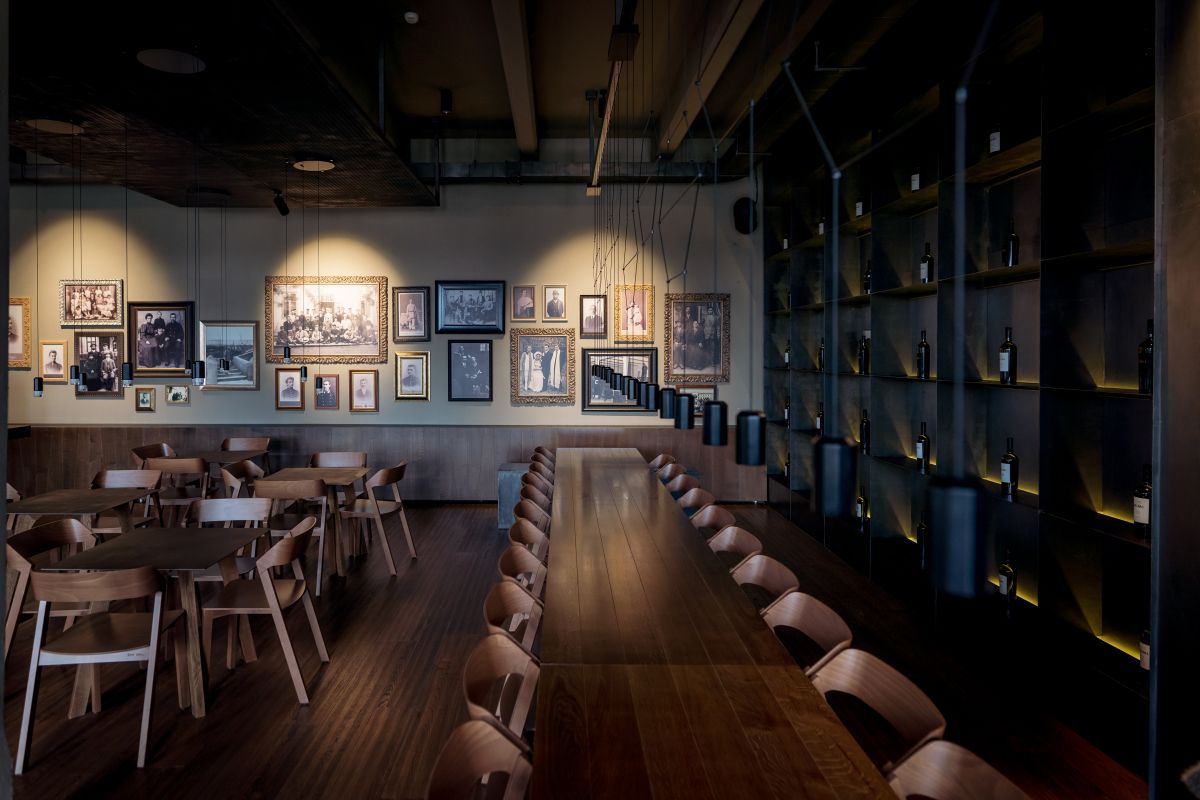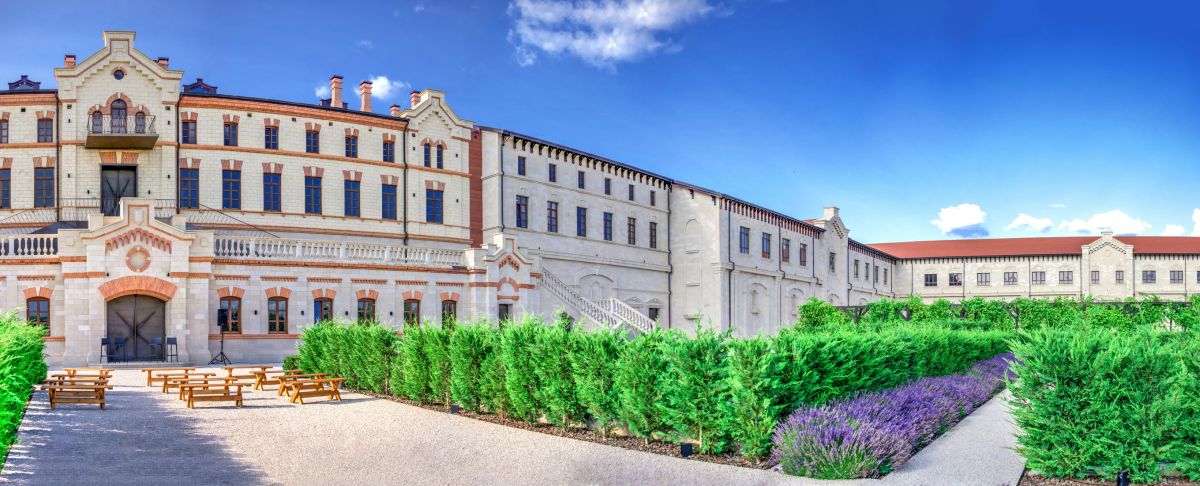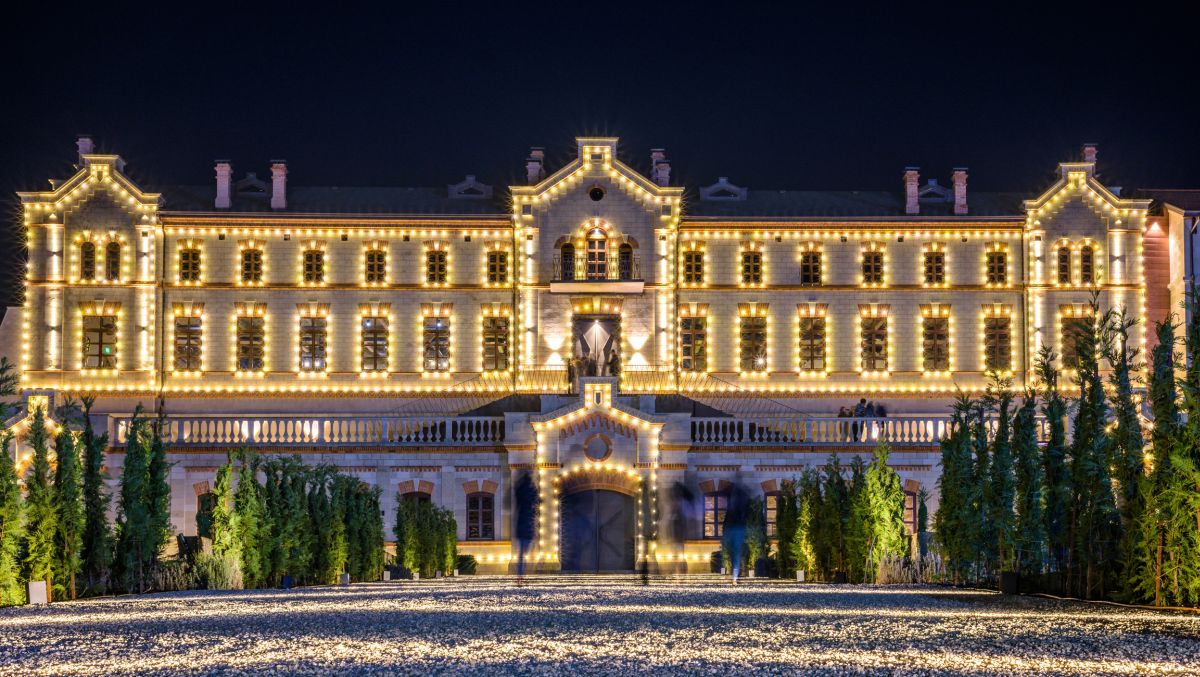
Mimi Castle in Bulboac is one of the most beautiful places in the Republic of Moldova, built by a boyar who studied in France, was the governor of Bessarabia and also held a financial position in Bucharest. What is the history of this place where the important summit will take place?
Bulboaca, the top and the castle
Bulboaca is a village in the Moldovan district of Anenia Noi, it has 5,000 inhabitants, is located 45 km from Chisinau and is famous in Moldova for the Mimi wine castle and the Mimi family winery. The nearest town is Anenii Noi (8 km).
On June 1, the Moldovan village will host the second summit of the European Political Community, an event that will be attended by leaders of both EU and non-EU countries. 47 presidents and heads of governments of European countries are expected to attend this year’s event.

Castle restaurant (Shutterstock photo)
Mimi Castle is famous not only for its wine cellar, luxurious buildings and tastings, but also for its wine baths and grape oil massage. The main restaurant is called Bufnița Albă because, according to Mimi, there are owls in the area that tourists can sometimes see.
It is interesting that a significant part of the wines produced here end up in China and Japan.
Castel Mimi organizes wine tours and workshops with prices ranging from 80 to 650 Romanian lei (300-2500 Moldovan lei) depending on the duration of the tour, the number of wines tasted and the meals included. The “maximum sheet” tour is designed for a couple and costs the equivalent of 2,500 lei.
It is 200 km from Iași, 320 km from Suceava and approximately 500 km from Bucharest to Bulboaca.
Bulboaca, a 300-year-old village
First of all, it must be said that “bulboaca” means a bulb or whirlpool, that is, a place in the river where the water is deep and where there is a great danger of drowning.
The village was documented in 1711 under the name Bulboaca Tătărască. The name of the village can be found on the map of Dimitry Kantemir (1720) and the general staff of the Russian army during the Russian-Turkish war of 1768-1774.

Photo by Multipedia2014, Dreamstime.com
In 1806, Bulboaca consisted of two settlements: Bulboac Moldoveneasca and Bulboac Tatarasca, but after the Russo-Turkish war the Tatars left Moldova altogether (source Moldovenii.md).
In 1812, the territory between the Prut and the Dniester was annexed by the Russian Empire. According to a census conducted by the Russian authorities, there were 32 households and two churches in Bulboac. There was a wooden Orthodox church, certified in 1797. In 1808, a stone church “St. Nicholas”.
In 1817, there were 52 yards in the village, and the documents also mention viticulture, the industry for which the village is famous today.
In 1835, 191 men and 171 women lived in the village, and in the middle of the 19th century there were 101 families in Bulboac. In 1871, the village entered the “modern era”, as a railway station was opened on the new Chisinau-Tiraspol railway line.
In 1901, a winemaking company was founded in Bulboac, which dates back to the 1950s.
Konstantin Mimi, politician, governor and winemaker
Constantin Mimi was both a politician and a winemaker, serving briefly as governor of Bessarabia and holding important financial positions in Bucharest during Greater Romania.
The Mimi family has Greek-Albanian roots, and the name Mimi comes from the Greek name Mykhailo. During the tour of the castle, Konstantin Mimi is described as the first Bessarabian to drive a Ford and the first to use reinforced concrete in construction.

Photo by Multipedia2014, Dreamstime.com
In 1893, Boye Mimi began to grow new grape varieties on the territory of the Bulboak estate and produce wine in large quantities, which he then exported to Moscow, Odessa and Vladivostok. For the first time in the history of Bessarabia, he exports and collects the “Aligote” variety, which over time becomes one of the favorite wines of Moldovans. The plant was located near the railway, so exporting to the USSR was more convenient.
Construction of Mimi Castle began in 1893, and the building was inaugurated in 1901. The impressive two-story building was built to a French design and was the first building in the region to use reinforced concrete.
The life of Contantin Mimi in some key dates
1868: On February 2, Konstantin Mimi was born in Chisinau to Alexander Mimi and Aglaida Vakamei, both of Greek origin.
1891: At the age of 23, Konstantin Mimi inherits his father’s lands located near the town of Bulboaca.
1893: Konstantin plants the first vine seedlings on his estate and begins the construction of the castle, thus beginning the history of modern Mimi wines.
1897: Mimi graduated from the Higher Agricultural School in Montepellier, France, where she spent two years studying the art of grape growing and French winemaking methods.
1901: the castle was officially put into operation. Soon the wines from here begin to gain popularity at various competitions.
1914: In the summer of 1914, Russian Tsar Nicholas II stops at the winery. This visit helps the monarch to better understand Bessarabian wines and stimulates an increase in supplies to the territory of the Russian Empire. It is said that Mimi signed a contract to supply wine to the Russian military.
1917: Konstantin Mimi becomes governor of Bessarabia, appointed by the Russian Provisional Government formed after the Russian Revolution of that year.
1925: Charles II, crown prince of the Romanian throne, passes by the possessions of the Mimi boyars during a visit to the Tigin citadel.
1935: Died on April 17 in Chisinau.
Mimi’s Castle after Mimi’s death
In 1940, Castel Mimi became the property of the Soviet state, soon turned into a winery, one of the largest in the USSR.
In 1952, the state farm factory “Bulboaka” was established, which specialized in viticulture and the production of raw wines, and at the end of 1977, the construction of a new wine factory with a processing capacity of 40 thousand tons of grapes began. The new plant was commissioned in 1982, and Mimi was one of the largest wineries in the USSR, producing more than 6 million bottles per year.

Photo by Frimufilms, Dreamstime.com
The winery was modernized in 2010, when new equipment was also brought in. The castle was modernized in 2011-2016 by the Trofim family. The mansion is L-shaped, and the first building was built between 1893 and 1901. The second building was erected and expanded between 1920 and 1950. Here you can read an interview with the main investor, conducted by mold-street .com publication.
Photo source:
Dreamstime.com
Source: Hot News
Ashley Bailey is a talented author and journalist known for her writing on trending topics. Currently working at 247 news reel, she brings readers fresh perspectives on current issues. With her well-researched and thought-provoking articles, she captures the zeitgeist and stays ahead of the latest trends. Ashley’s writing is a must-read for anyone interested in staying up-to-date with the latest developments.